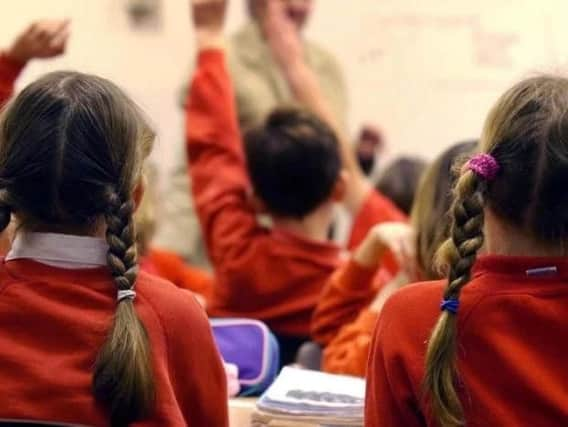Schools blighted by segregation as Yorkshire district is named as one of the most divided


The study shows that in 2016 more than a quarter of primaries and around two fifths of secondaries were ethnically segregated. And nearly three in 10 primary schools and more than a quarter of secondary schools are split by social background. This means that many schools across the country have pupil populations made up overwhelmingly of white British, or ethnic minority youngsters, or have large numbers of children from either rich or poor homes. Areas seeing rising school segregation include Kirklees in West Yorkshire, where more than 48 per cent of primaries and 79 per cent of secondaries show evidence of ethnic division, compared to 46 per cent and 77 per cent in 2011, the report said. North Yorkshire maintains the lowest level in the region, with more than 19 per cent of primary schools and 38 per cent of secondaries showing evidence of ethnic segregation.A spokesman for Kirklees Council said: “We celebrate our diversity as a strength and promote cohesion and integration and we work closely with schools, parents and our inter faith networks. “Where children live and go to school in an area where there is less opportunity to experience difference, the communities and schools work together to promote integration. This includes taking part in enrichment programmes that allow children from different schools to come together and share what they have in common regardless of race and ethnicity.”The spokesperson said the authority reviewed its admissions arrangements on an annual basis, adding: “The law gives parents and carers the right to express a preference for the school they wish to attend - they can choose which schools to put on their application and the order of preference. Our aim is to ensure that we put children and young people at the heart of what we do and that there are sufficient, high quality places in every community.” The findings show that more needs to be done to make school intakes more representative of their local communities, according to The Challenge, which carried out the research.The charity, working with the iCoCo Foundation and SchoolDash which both promote social inclusion, examined how segregated a school was by comparing its numbers of free school meals and white British pupils with those of 10 schools closest to them. They used data for 2011 to 2016, covering more than 20,000 state schools. A school was considered “segregated” if the proportion of ethnic minority pupils or pupils on free school meals was very different to those at the 10 nearest schools.In Bradford, levels of segregation have fallen from 63 to 58 per cent in the city’s primary schools and from 89 to 70 per cent in secondary schools. But during the same period, the number of white British children attending Bradford schools fell from 50 to 44 per cent.The study found that secondary schools are more likely to be segregated by ethnicity, while primaries are more likely to be divided along socio-economic lines.Primary faith schools are more ethnically segregated than those of no faith when compared with neighbouring schools, the study found.Primary schools with a religious character were also more likely to have a wealthier student population, with more than one in four having significantly fewer disadvantaged pupils than other nearby schools, compared with 17 per cent of non-faith primaries.At secondary level, schools rated as “inadequate” tended to be more ethnically segregated, while those judged “outstanding” by inspectors were more likely to have a representative mix of pupils, compared with neighbouring schools.And grammars - a school type earmarked by the government for expansion - were severely segregated by social background.Some 98 per cent of these selective schools had low numbers of poorer pupils, compared with their local schools, and none had pupil populations with high numbers of free school meal students.The study also suggests that in some areas the situation is worsening - with primaries becoming more ethnically segregated in the last five years in over half of the 150 areas analysed.The Challenge’s director said: “This study shows far more needs to be done to make sure school intakes are representative of local communities.“As the Government’s Casey Review pointed out, segregation is at a ‘worrying level’ in parts of the country.”Local and national government needs to commit to doing more to reduce school segregation, he said.“We know that when communities live separately, anxiety and prejudice flourish, whereas when people from different backgrounds mix, it leads to more trusting and cohesive communities and opens up opportunities for social mobility.“We urge local authorities, faith schools and academy chains to consider the impact admissions policies have upon neighbouring schools and put policies in place that encourage better school and community integration.”A Department for Education spokesman said: “We expect all schools to promote social integration and the fundamental British values of democracy, the rule of law, individual liberty, and mutual respect for different faiths and beliefs.“Our free schools programme already encourages applications for free schools which aim to bring together pupils from different ethnic or faith groups, and our consultation, Schools That Work For Everyone, includes faith schools setting up twinning arrangements with others not of their religion so that pupils mix with children from different communities and backgrounds.“But we know there is more to do. The Casey Review highlighted a number of issues around levels of ethnic segregation in school intakes in some areas of the country. The government is considering the review and its recommendations and will respond in due course."